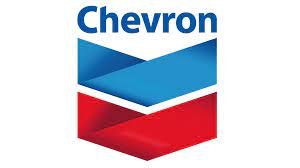$GALP $XOM $TOT
#Galp #Namibia #OilDiscovery #EnergySector #OffshoreExploration #OilPrices #LightOil #GasCondensate #AfricanMarkets #SustainableEnergy #EnergyInvestments #GlobalMarkets
Namibia’s offshore sector has emerged as a key player in the global energy industry, drawing significant interest from international exploration and production companies. Portugal’s Galp Energia has announced the successful completion of its latest drilling campaign, with the Mopane-1A appraisal well located in Block PEL83 revealing high-quality light oil and gas-condensate reserves. This marks the third successful appraisal well in the region, confirming further potential for Namibia to become one of Africa’s most lucrative energy hotspots. The quality of the findings includes standout geological characteristics such as good porosities, high permeabilities, and high reservoir pressures, with the added benefit of low oil viscosity. Importantly, the findings report minimal CO2 emissions and the absence of hydrogen sulfide (H2S) concentrations, making this an operationally and environmentally viable discovery.
This latest appraisal further strengthens Namibia’s growing reputation as a frontier exploration zone. Over the past few years, the country has seen major investments from oil and gas companies like ExxonMobil and TotalEnergies, supporting infrastructure development and resource mapping. Galp’s ongoing success in this region could potentially bolster its stock, with energy investors paying close attention to new discoveries that have the potential to scale into significant production. The presence of light oil and gas-condensates in such high-quality reservoirs also serves as a bullish signal for the wider oil market, as these are easier and less costly to refine into end products like gasoline and jet fuel. In the face of volatile oil prices, discoveries like this could provide hedging stability for companies looking to diversify their reserves.
For the broader market, the discovery may lead to increased activity in the energy sector, particularly in African exploration markets viewed as less saturated compared to traditional energy hubs like the Middle East and the North Sea. This has numerous implications for global energy security and pricing. Light oil, being less carbon-intensive, aligns with the global push toward cleaner energy alternatives, which makes this discovery significant for firms aiming to achieve their transition goals without completely abandoning fossil fuels. Furthermore, as international oil majors ramp up drilling investments in Namibia, they may also seek partnerships or acquisition opportunities with smaller firms in the region, fueling M&A activity within the energy sector.
Investors and market participants will now be watching closely for further updates from Galp regarding the potential volume of reserves and their commercial viability. Initial indications suggest high-quality output, which could translate into robust profit margins given current refining efficiencies. The success of Mopane-1A also solidifies Namibia’s status as an exploration frontier, potentially attracting even larger flows of foreign direct investment. At the same time, global energy markets will need to weigh in how emerging supply from Namibia could impact long-term price stability, especially as demand for fossil fuels remains under scrutiny amid the energy transition narrative.











Comments are closed.